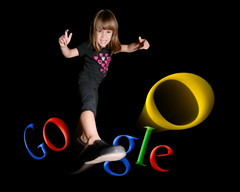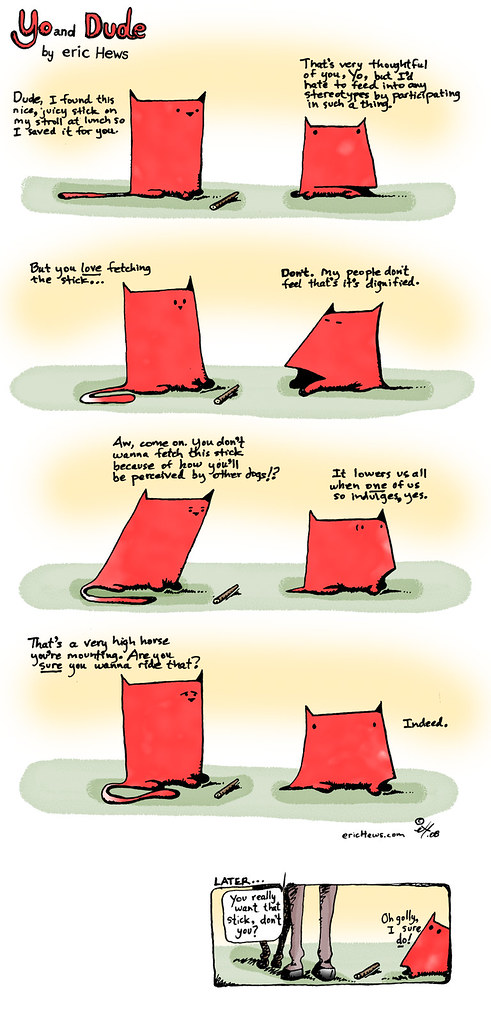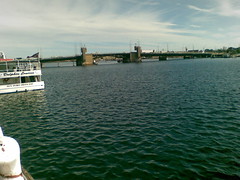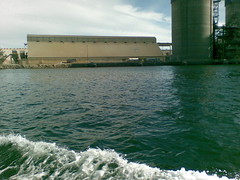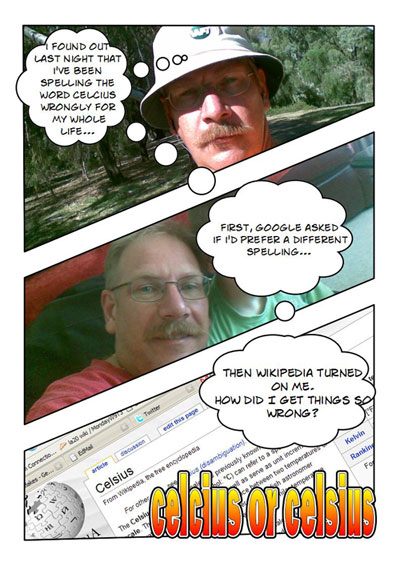I've been lurking around some excellent blog posts and catching some mind challenging tweets of late. This little beauty from Will Richardson is a typical thoughtful piece of writing but it is the quality of the comments that had me enjoying the to and fro of the topic. The conversation is clear, concise and insightful - and often sums up my own inner turmoil in better words than I could summon up myself in the same venue. Where everything is heading in regards to the future of education, heck, the future of learning is hotly debated by better informed minds than mine but only by reading and eventually engaging in the conversation can I expect to get a better grasp of my own role within that future.
There is always talk about preserving the essentials, the traditional knowledge, skills and concepts that will always be needed. Politicians like to call them the "basics" but I don't think that educators and our powers that be necessarily have the same things in mind. Our parents certainly may another mindset altogether, as Trevor Meister pointed out in Will's comments:
The notion that things will remain status quo until parents Demand changes led to this comment-
“But the only way that parents are going to DEMAND access is if they see that not simply as a way for kids to get a computer but to see connections online as a way to a better future, a way to help their kids become more educated, better learners than by books and paper alone.”
Other comments suggest that this is not likely to happen because either parents are ignorant of technology or are caught between a rock and a hard place worrying about getting their kids into college, which is best served by status quo.
A third reason this might not happen is probably not much of a factor now, but will be. What about the Parent that sees all to well “connections online as a way to a better future, a way to help their kids become more educated, better learners.” For them the use of emerging tech, web2.0/3.0 and what ever comes next is just a part of life. They are also starting to see major cracks in the old -you have to go to college to get a “good job”, what ever that is because “Employers” require you to have a “degree”. Most of the people they interact with on a day to day basis may be freelancers, independent subcontractors, or entrepreneurs running their own show. To them the idea of saying, “Wow that is amazing work and is exactly what we need, …but I’m sorry, you didn’t graduate from college.” would be ridiculous.
This parent is also not likely to DEMAND greater access and use of technology for better learning. For one, because of their connectedness, they have witnessed the back and forth battles over the same issues for years and can guess that their Demands will be in the minority and are likely to fall on deaf ears. (They may also have figured this out at the last parental advisory group meeting when everyone looked at them like they were from another planet after each and every comment or suggestion.) They have already declared the horse dead and as everyone knows, even if you drag a dead horse to water its not going to drink, no matter how hard you beat it. For another, the level of access and the knowledge of tools available may be higher at home. When the child comes home with a “Research Project” that includes the word- presentation along with the words- Power and Point instead of being thrilled, they send a note back to school - “I am sorry, my son/daughter can not complete said “Research Project” as I had previously vowed to strangle the next person I saw doing another lame power point presentation. Don’t worry, we will do the research, but will choose an alternate form of presentation.” This parent doesn’t feel the need to demand much of anything, they might even be the ones least likely to. They and their child have all the access they need, an awareness of what is available “out there” and the ability to tap into it when needed.
I do want to make it clear that I am not saying this parent is any “better”, this is just their reality. For now, their numbers are probably fairly small, but it is hard for me to imagine that this demographic would not continue to grow.
See what I mean about minds better than my own...
Trevor expands further on one possible future as we have more parents joining the ranks of the hyperconnected:
Take that now larger group of hyper-connected parents, mix with group of hyper-connected educators (especially those that found themselves left behind in the middle) armed with even more powerful technologies and networking know how, and stir. If these aren’t a nearly perfect set of conditions for spurring innovative solutions, I don’t know what is. How long would it be before someone said, enough, would it be possible to organize a series of unconferences or tweetups or #barcamp style gatherings? We could call them #schoolcamps or #learnups, and do follow up in between on-line. …. (many other possibilities exist of course, -perhaps the AI instruction/testing model will finally be perfected.
So, in true inquiry style where the question is the starting point for thinking, I posed this over at my new staff Ning (where the tumbleweed is still blowing through):
If School Is Changing To Match Our Students' Future... then what essentials do you think we need to keep regardless of that future?
I hope my staff are keen to engage with this question and help me to figure some of the potential answers. I'm just hoping that they don't mimic what one of the smartest people in my network observed at the recent ALEA Conference in Tasmania:
It is 8:15am and I am watching English teachers crowding wildly around the worksheets stand excitedly buying worksheets to bore kids *sigh*
What are the essentials? What is the difference between them and the 21st Century Skills that are touted as where educators need to be?



